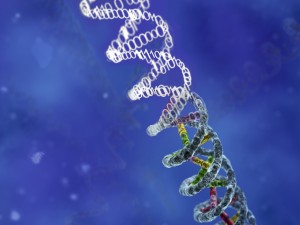Oxford Researchers Working on New Drugs to Treat Duchenne Muscular Dystrophy

25th November 2013
Reviving a gene which is “turned down” after birth is potentially the key to treating Duchenne Muscular Dystrophy, an untreatable muscle-wasting condition which affects one in every 3,500 boys.
The first signs of the disease are difficulty in walking beginning between the ages of 1 and 3. Boys with the condition are likely to be in a wheelchair by age 12 and live only into their twenties or thirties. The disease is caused by lack of the muscle protein, dystrophin.
Professor Dame Kay Davies and Professor Steve Davies at the University of Oxford have been working on treatments for the condition for 17 years. In recent months they have found a number of new molecules s capable of increasing the levels of utrophin. Greater levels of utrophin can compensate for the lack of dystrophin and stabilise muscle membrane, returning it to proper working order. They have worked with Oxford University Innovation, Oxford’s technology transfer arm, who have struck a deal with AIM-listed Summit plc to develop the drugs further.
“Duchenne Muscular Dystrophy is a devastating muscle wasting disease for which there is no known cure,” said Professor Kay Davies. “In our ideal world the first molecule we developed with Summit plc, SMT C1100, will have a beneficial effect in these patients. But although SMT C1100 looks promising, we asked ourselves – can we find other drugs that might do even better?”
“These boys all still have the utrophin gene – and that’s what we’re taking advantage of. In adult muscle, utrophin is present in very low amounts, and we aim to increase the amount to levels which will help protect the muscle in these boys.
“If this approach, called utrophin modulation, really works as we hope, we could treat these boys very early on, increase their quality of life and length of life. They would walk for longer.
“This is a disease that really needs effective treatment – it takes many families by surprise because of the high new mutation rate which occurs in dystrophin protein such that boys with no family history of the disease can be affected.”
The Oxford professors have been working with Oxford spin-out company, Summit plc to develop their first drug for Duchenne Muscular Dystrophy, SMT C1100. In 2012, SMT C1100 successfully completed a Phase 1 trial demonstrating the drug was safe and achieved therapeutic blood levels in healthy volunteers. It is now about to enter clinical trials in DMD patients.
The new deal will see a research collaboration formed between the University of Oxford and Summit plc to further the development of these new molecules.
Professor Steve Davies said: “We want to ensure that this utrophin modulation therapeutic approach has the best chance of success in the shortest time for treating Duchenne Muscular Dystrophy. We are delighted to join forces with Summit plc in developing, alongside first in class SMT C1100, these back-up and potentially best in class candidates”.
Tom Hockaday, Managing Director of Oxford University Innovation, said: “Isis is delighted to support Professors Kay Davies and Steve Davies in this vital work. Having a number of potential drug candidates in development greatly increases the chances of reaching the ultimate goal, which is to successfully treat this incurable disease.”
Glyn Edwards, Chief Executive Officer at Summit, said: “The alliance provides access to differentiated classes of utrophin modulators, potentially with new mechanisms, to complement our clinical candidate SMT C1100, while also establishing a strong drug pipeline for the future. Importantly, the alliance cements our long-term relationship with two scientific leaders at the University of Oxford.”
The Oxford research which has produced the new molecules has been funded by the Muscular Dystrophy Campaign and the Muscular Dystrophy Association.
Press release sign up
